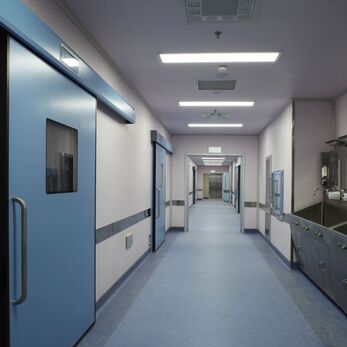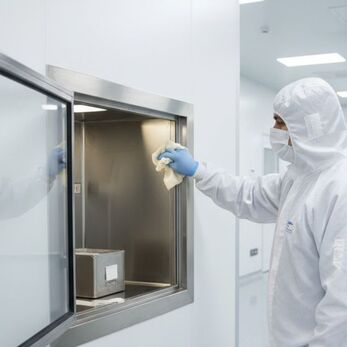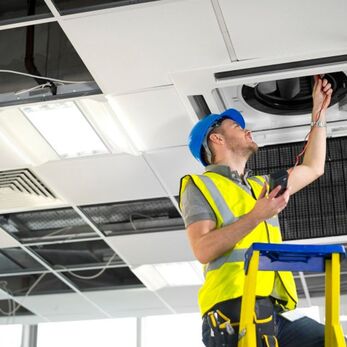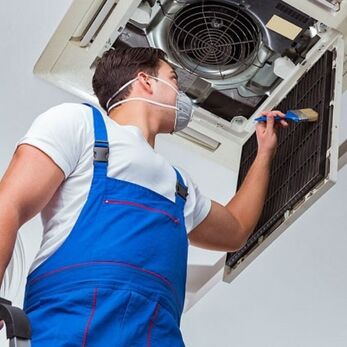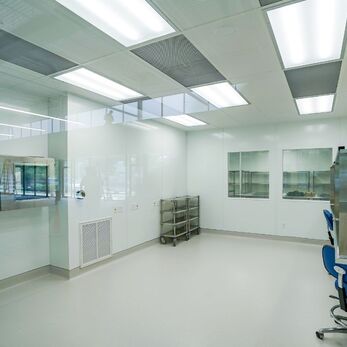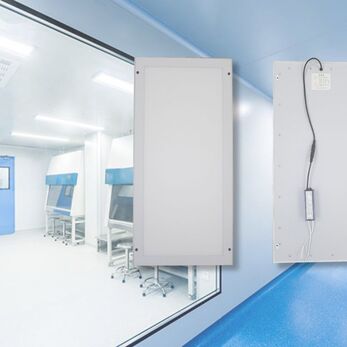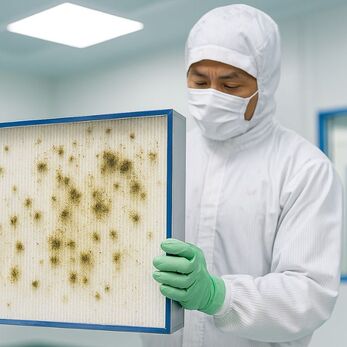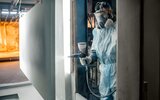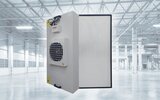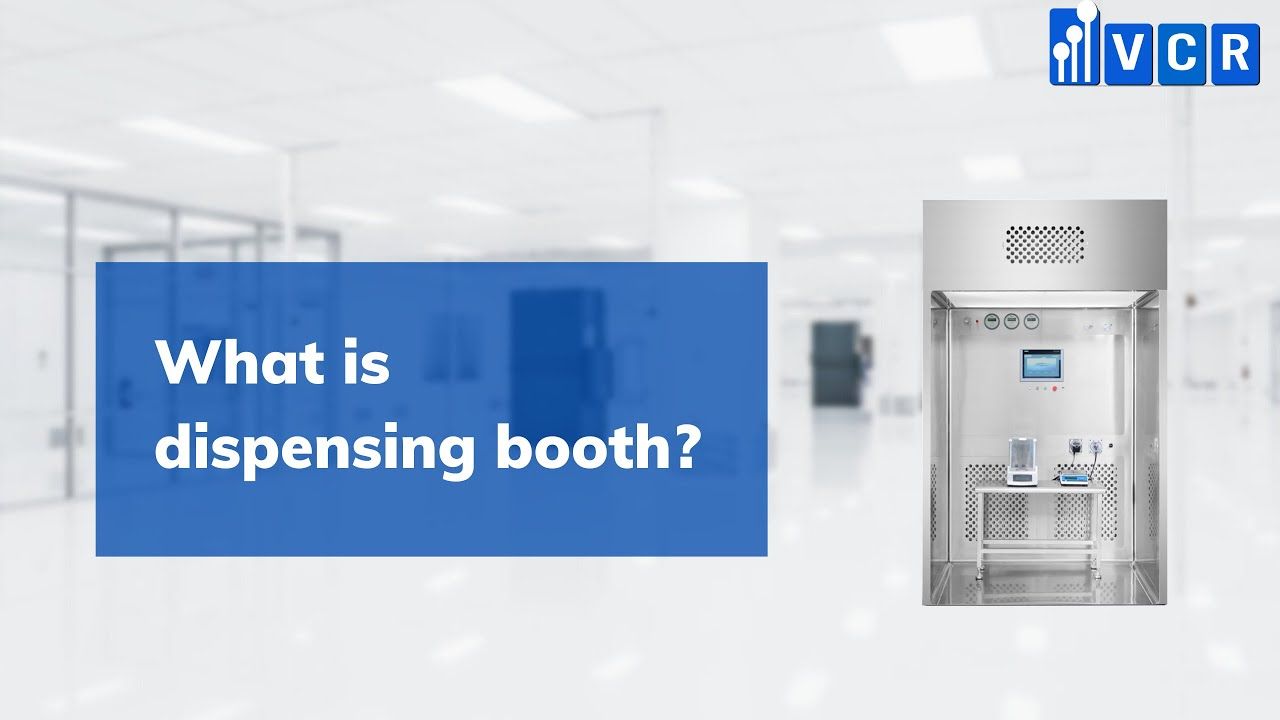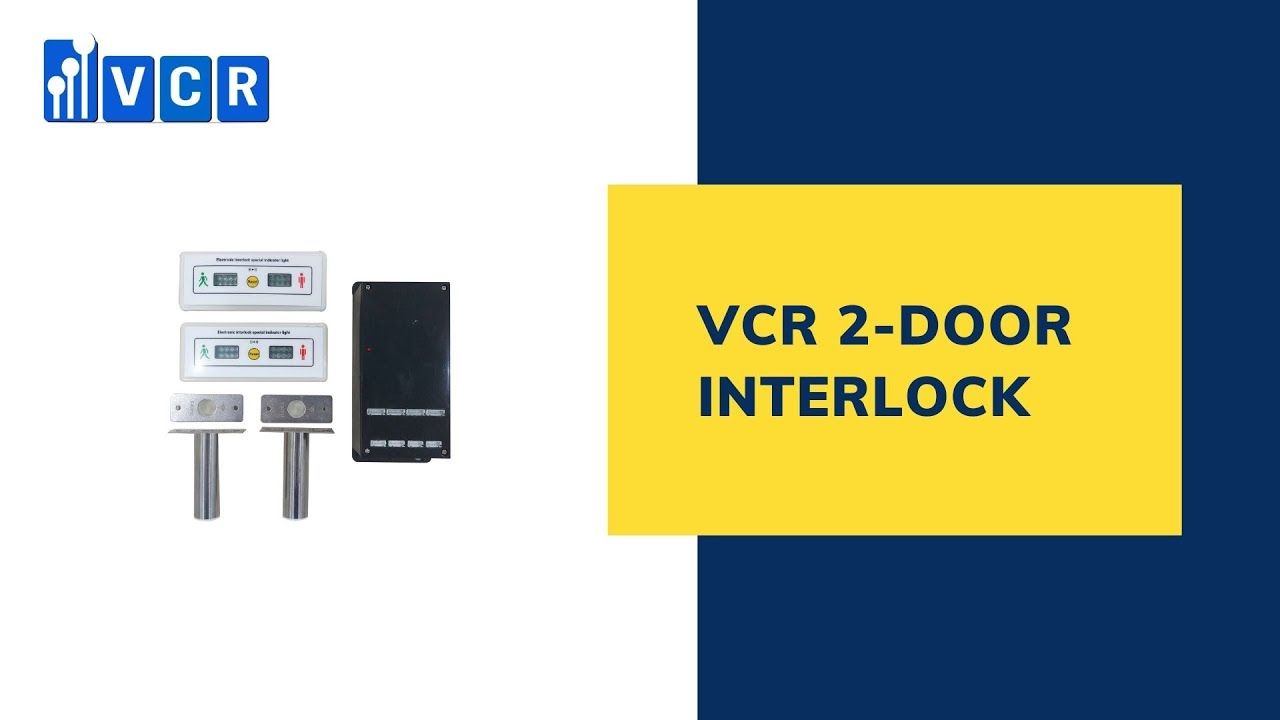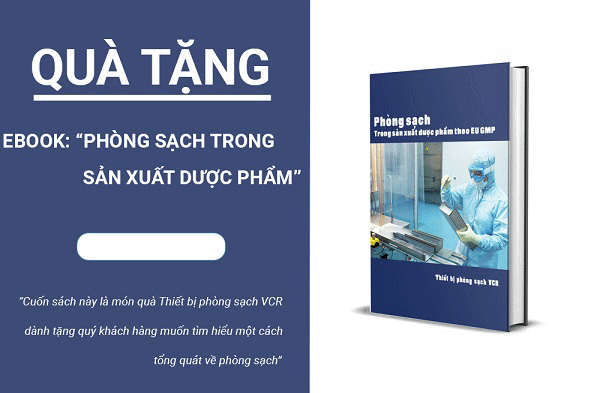Air filter standards
Air filter is a device made of fibrous or porous materials designed to remove solid particles such as dust, pollen, mold, and bacteria from the air.
The air filtration system is essential in cleanrooms. To ensure dust levels in work areas do not impact performance, standard air filtration systems are required.
So, what is air and dust filtration in cleanrooms? What are the current air filter standards? The following article by VCR provides insights into these topics.
Cleanroom Air Filter
Air filter is a device consisting of fibrous or porous materials designed to remove solid particles such as dust, pollen, mold, and bacteria from the air. Filters containing adsorbents or catalysts such as charcoal (carbon) can also remove odors and gas pollutants such as volatile organic compounds or ozone.
Air filtration in cleanroom helps minimize contamination and cross-contamination between equipment, employees, and products. Therefore, air filters are used in applications where air quality is important, especially in Cleanrooms, building ventilation systems, and engines.
There are many cleanroom air filters on the market with different designs and models suitable for each type of cleanroom. They are usually divided into three levels of filtration: primary filtration (crude filtration), secondary filtration (fine filtration), and HEPA/ULPA filtration, adhering to established standards.
Read more: How to prevent cross-contamination in cleanroom?
Standards in cleanroom Air Filtration
Cleanrooms were first used in the medical field. The first standard for a cleanroom is dust content, which refers to controlling the amount of dust particles suspended in the air.
Gas purification standards were first introduced in 1963 in the US and have since become widely adopted worldwide.
In 1993, the European Standards Commission, Technology Commission 195, Working Group No. 1 (CEN/TC195-WG1), issued a new general standard for air and dust filtration.
The EN 779 and EN1822 gas purification standards were introduced as part of a unified framework. Member countries of the European Union are required to issue their own versions of these standards based on this framework. For example, the UK adopted BS EN 779, and Germany adopted DIN EN 779.
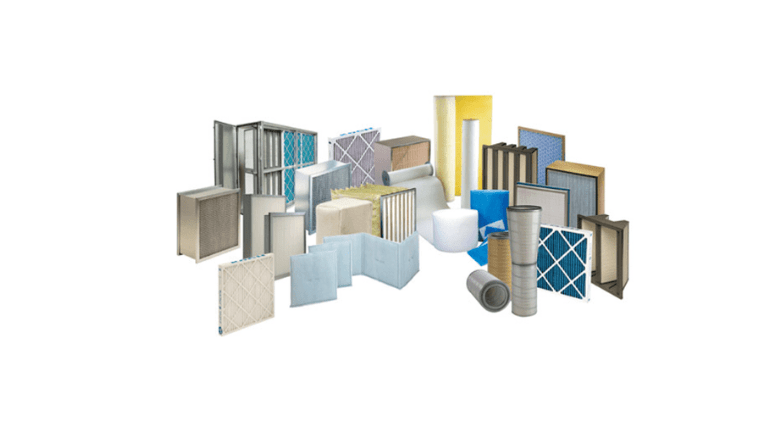
Standard EN 779:2012
The EN 779 air filtration standard is based on documents such as EUROVENT 4/5 and ASHRAE 52.1:1992 but is significantly stricter than these standards. This standard (EN 779) combines a classification system for coarse dust filtration and fine dust filtration based on the ability to capture dust particles at a final specific pressure difference.
The EN 779:2012 standard is widely used in Europe and globally to evaluate the filtration efficiency of air filters and cleanroom dust filters. Air filtration with an initial dust holding efficiency of ≤95% is classified under the dust retention levels for coarse filtration, ranging from G1 to G4. The final certified pressure loss (indicating the need for filter replacement) is up to 250 Pa.
Read more: What is Pre Filter?
Filters with dust retention performance of over 50% after the primary filtration stage (for smaller dust particles than those in the natural environment) are classified as fine filters, ranging from F5 to F9. The final pressure loss specified for these filters (indicating replacement is required) is a maximum of 450 Pa.
The two criteria used for evaluation are the average dust retention capacity and the average performance for dust particles with a diameter of 0.4 μm.
However, due to increasing pollution levels and significant changes in the content and composition of airborne dust, the EN 779:2012 standard is gradually becoming outdated. Scientists believe it is necessary to develop a new set of standards and establish uniform methods for evaluating dust filtration systems and cleanroom air filtration. Therefore, the ISO 16890 standard was introduced, completely replacing the EN 779:2012 standard at the end of June 2018.
ISO 16890 Standard
The basis for evaluating air filtration systems and cleanroom dust filtration using the ISO 16890 standard is a classification system based on particulate matter efficiency (ePM). According to ISO 16890, filtration efficiency is assessed across the entire particle spectrum, unlike the EN 779 standard, which evaluates only particles with a diameter of 0.4 μm.
|
Group symbol
|
Request | Classification report value | ||
| ePM1,min | ePM2,5min | ePM10,min | ||
| ISO coarse grain | - | - | <50% | Ability to hold dust by initial weight |
| ISO ePM10 | - | - | ≥50% | ePM10 |
| ISO ePM2,5 | - | ≥50% | - | ePM2,5 |
| ISO ePM1 | ≥50% | - | - | ePM1 |
European Standard EN 1822: Updated Standard for HEPA and ULPA Filters
HEPA and ULPA filters are made from specialized materials designed to maintain consistent airflow and high filtration efficiency.
The filter media is tested for integrity using the MPPS (Most Penetrating Particle Size) method, while overall performance is evaluated using a laser spectrometer or particle counter.
Leakage is determined by measuring the maximum allowable particle concentration, which must not exceed five times the baseline particle count.
Filters are classified based on test results, with HEPA filters ranging from H10 to H14 and ULPA filters from U15 to U17 according to the EN 1822 standard.
Filter classification |
Performance (%)/MPPS |
Penetrating particles (%)/MPPS |
||
|
Filtering efficiency |
Penetrating particles |
Filtering efficiency |
Penetrating particles |
|
|
H10 |
≥85 |
- |
15 |
- |
|
H11 |
≥95 |
- |
5 |
- |
|
H12 |
≥99,5 |
- |
0,5 |
- |
|
H13 |
≥99,95 |
99,75 |
0,05 |
0,25 |
|
H14 |
≥99,995 |
99,975 |
0,005 |
0,025 |
|
U15 |
≥99,9995 |
99,9975 |
0,0005 |
0,0025 |
|
U16 |
≥99,99995 |
99,99975 |
0,00005 |
0,00025 |
|
U17 |
≥99,999995 |
99,9999 |
0,000005 |
0,00025 |
Read more: HEPA Filters And ULPA Filters Comparison
Cleanroom Filtration Level
Primary Filter (Raw Filter)
The primary filter, also known as a pre-filter, is a type of filter attached at the inlet of the clean air filtration system to prevent coarse dust particles larger than 20µm.
Primary filtration acts as the first layer of protection in the air filtration system, serving as a barrier against larger contaminants. This initial filtration layer prevents larger particles from reaching the subsequent filtration stages, reducing their load and enhancing overall system efficiency.
There are three common types of primary filters, each designed for specific applications and filtration needs:
Paper Frame Coarse Filter
Paper frame coarse filters are used to filter cleanroom dust during the pre-filtration stage or as part of the ventilation system in cleanrooms.
These filters are manufactured with synthetic fiber materials according to the EN 779 standard and feature a lightweight paper frame designed for durability and filtration efficiency. Paper frame coarse filters are divided into various filtration levels, with G3 and G4 being the most common in Vietnam.
This filter material is commonly applied in primary dust filtration in AHU systems or at air intake points. The recommended final pressure difference for replacement is 250Pa.
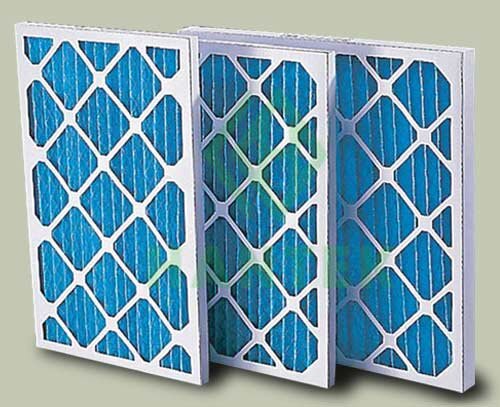
Coarse Filter in Roll Form
Coarse filter cotton, also known as coiled coarse filter, is a material widely used in industrial production with the main function of filtering and retaining large dust particles. In addition, the coil coarse dust filter is used to filter dust in paint spraying rooms, improving the quality and finish of the paint.
The coil coarse filter is composed of synthetic fibers, with multiple filter layers intertwined in a complex matrix that maximizes dust retention and ensures clean air output. The reinforcing mesh layer on the air surface creates a stable structure, even under high wind speeds or sudden changes.
The white coil coarse filter is applied in air conditioning systems (HVAC) with low pressure loss. With moderate filtration efficiency, it can be applied in paint rooms and drying rooms for painting processes.
The filter can operate at humidity levels of up to 100% and temperatures up to 70°C.
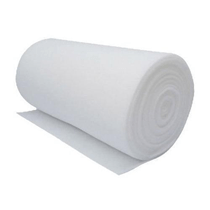
Aluminum Frame Coarse Filter
The aluminum frame coarse filter is a cleanroom air filter with high efficiency, capable of filtering dust particles larger than 5 µm. It is suitable for use in main air conditioning systems.
It is produced from synthetic fiber material and features a cast aluminum frame. The filter is applied to remove dust in AHU systems and is used in return air vents.
The recommended final pressure difference for replacement is 250 Pa.
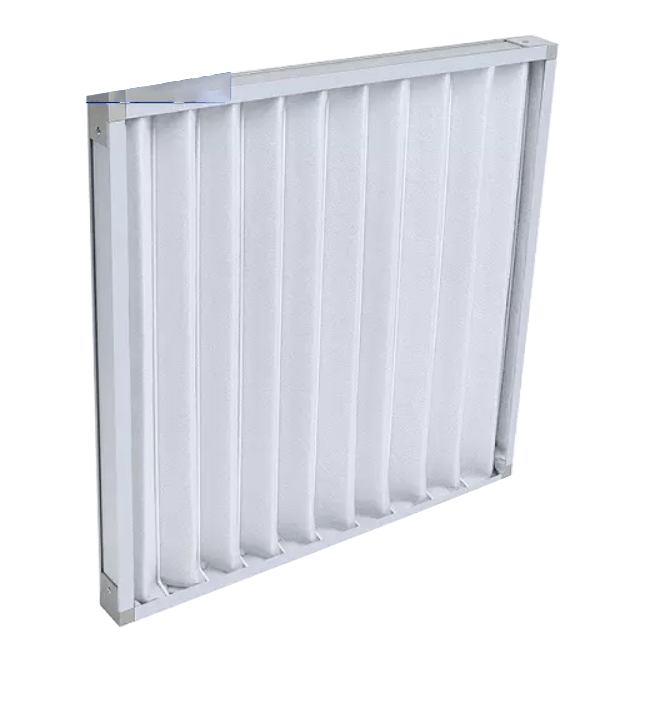
Secondary Filtration (Fine Filtration)
The secondary filter, also known as a secondary filter plate, is a product used in the second stage of the filtration system, installed after coarse filtration. The secondary filter is responsible for filtering dust particles with an average size of 0.5 µm or larger, helping to protect and extend the life of the downstream HEPA filter.
Bag Filter
The bag filter is a type of air filter designed in the form of a bag. It functions to filter air before it enters the environment or the clean weighing area. Bag filters are designed for installation inside air conditioning systems and are classified as fine filters (Fine Filters).
The filtration efficiency of bag filters ranges from 80% to 95% for suspended particles in the air with a size of 0.4 micrometers or larger, depending on the filter grade. For particles 0.5 micrometers or larger, the bag filter can achieve near-complete removal.
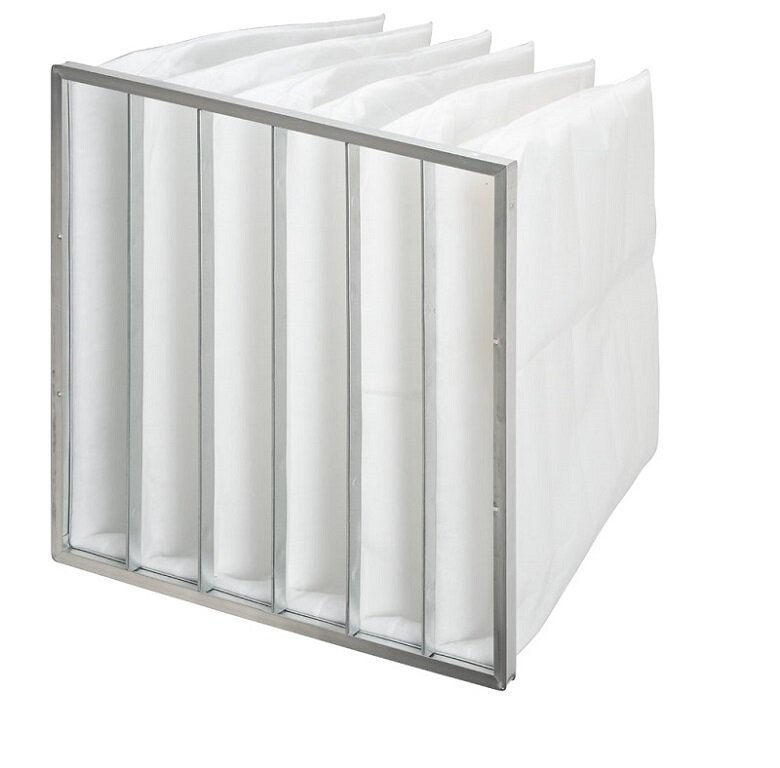
Bag filters are commonly installed behind coarse filter plates or primary filters (Pre Filters). They are dust filtration devices and cleanroom air filters used for preliminary air filtration in FCU and AHU systems within Cleanrooms, electronics factories, hospitals, and laboratories.
Mini Pleat Secondary Filter
- Frame: Galvanized steel (GI)
- Operating temperature range: 80°C to 100°C
- Filter level (EN 779:2002): F6, F7, F8
- Recommended final pressure difference: 450 Pa
- Filter material: Made of synthetic fiberglass
- Description: Compact filters with pleated media designed for high filtration efficiency and low pressure drop.
Secondary Filter Separator
- Application: Ventilation and air conditioning systems in electronics, pharmaceuticals, and photography industries.
- Frame: Galvanized steel (GI)
- Filter level (EN 779:2002): F6, F7, F8
- Recommended final pressure difference: 450 Pa
- Description: Features spacers that ensure uniform pleat separation for consistent airflow and particle capture.
V-bank Secondary Filter
- Purpose: Typically installed as a pre-filter to HEPA systems to capture medium-sized particles and extend the HEPA filter's lifespan.
- Frame: ABS plastic
- Filter level (EN 779:2002): F6, F7, F8, F9
- Recommended final pressure difference: 450 Pa
- Filter material: Made of synthetic fiberglass
- Applications: Commonly used in HVAC systems for electronic component factories, food processing facilities, medical centers, pharmaceuticals, hospitals, and laboratories.
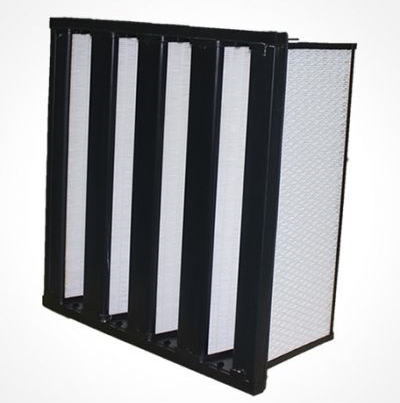
HEPA/ULPA filter
Mini Pleat HEPA Filter
The Mini Pleat HEPA filter is a cleanroom air filtration device used as the final filtration stage in air conditioning systems for sterile environments such as laboratories and pharmaceutical facilities.
Key Features:
- High Filtration Efficiency:
Provides an effective range of H10 to H14 class efficiency according to EN standards.
- Advanced Filter Media:
Constructed from high-quality glass fiber paper, folded precisely, and separated by hot melt spacers.
Reinforced on both sides with powder-coated metal mesh for added durability.
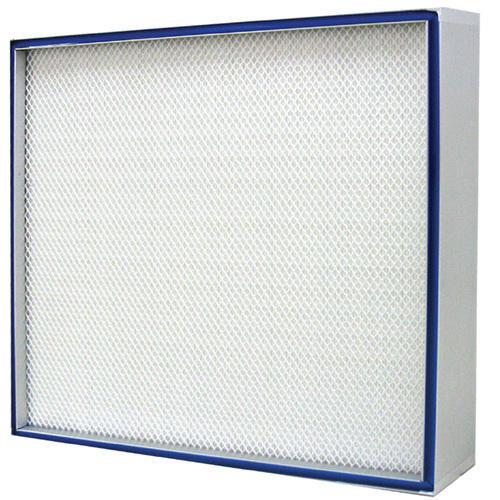
- Sturdy Construction:
Available in a range of standard sizes with frames made of stainless steel, aluminum, or wood-plastic composite.
Designed for both box-type and flange-type installations.
- Rigorous Testing:
Each filter is scanned and tested after assembly using advanced equipment to ensure compliance with specifications.
Achieves 99.99% efficiency for particles as small as 0.3 microns.
Performance parameters such as airflow, pressure drop, and filtration efficiency are confirmed and labeled on each filter.
- Versatile Application: Ideal for critical applications requiring high levels of air purity, such as laboratories, sterile manufacturing facilities, and Cleanrooms.
By adhering to these features, the Mini Pleat HEPA filter ensures reliable performance and optimal air quality in sensitive environments.
Separator HEPA Filter
Application: The Separator HEPA filter is used as the final filtration stage in air conditioning systems for Cleanrooms. It ensures efficient removal of fine particles, providing clean air for sensitive environments.
Specifications: Filtration Efficiency: Classified according to EN 1822:2009 levels: H10, H11, H12, H13, H14.
Frame Materials: Available in wood, galvanized steel (GI), or aluminum.
Gasket: Installed at the air inlet to ensure a tight seal and prevent air leakage.
Advantages of Air Filtration and cleanroom Dust Filtration
- Effectively filters large dust particles and fine particles invisible to the naked eye.
Creates a fresh, healthy working environment. - Saves energy by reducing heating, cooling, and air exchange costs.
- Durable filter systems with long service life.
- Enhances the efficiency and longevity of cleanroom operations.
- Certain pre-filters or coarse filters can be washed and reused, reducing operational costs.
Maintenance Tips:
Regular cleaning, maintenance, and timely replacement of the cleanroom air filtration system are essential to saving costs and maximizing the service life of the cleanroom.








